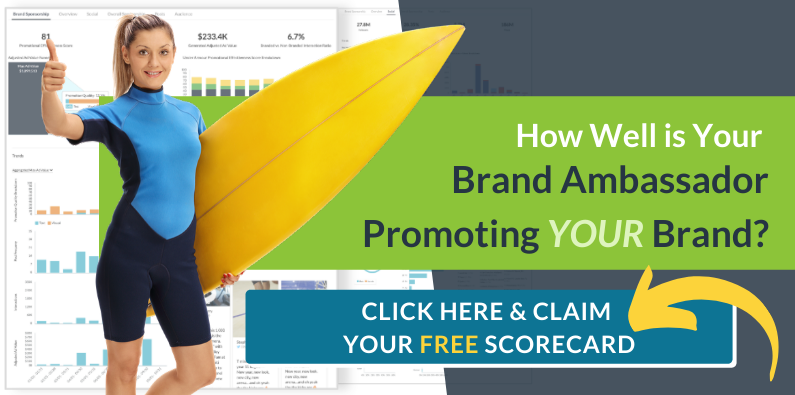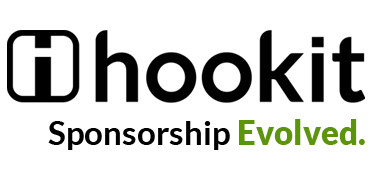Thought leaders from top sponsorship brands convened at Hookit’s bi-annual brand summit last week, where they talked about all things sponsorship. Brand representatives discussed sponsorship and the challenges it brings, ways to lead the industry using technology, and also shared some examples of how they used the Hookit platform to measure their campaigns and drive more value. Here are some highlights from the brand sponsorship summit.
Sponsorship trivia!
Interesting data about the top brands, athletes and social platforms of 2019.
Sponsorship evolution: Where is the industry going?
Sponsorships have evolved – in the past, most sponsorships were made based on gut feel or executive fandom, but with the wealth of data available today brands can measure the impact of their sponsorships, and use these valuable insights to drive future sponsorship decisions.

With 98% of marketers using social media to activate their sponsorships, and 42% rating social/digital presence as the 2nd most important sponsorship benefit behind category exclusivity, it is more important than ever to quantify the sponsorship value generated through social & digital media.
In a nutshell, to identify sponsorship value, brands must first understand if their sponsored entities are effective at promoting the brand. One way to do this is by looking at the social media promotion of brand ambassadors using Scorecards – think of these as social media report cards for ambassadors. Using the insights from the Scorecard, brands can educate their ambassadors to further refine their posts to improve promotion quality and optimize the content in branded posts to drive maximum value for the brand. Each step of this process is detailed below.
Is your brand ambassador an effective promoter?
Hookit’s scorecards are a great way for brands to gain an in-depth understanding of how effective their brand ambassadors are on social media. From an ambassador’s scorecard, a brand can learn about the entity’s social media performance, sponsorship performance, analytics related to the ambassador’s branded posts on social, social media audience of the ambassador, and more. Another essential feature is the ability to benchmark between various brand ambassadors as well as the top performer to understand how well the entity is performing in comparison.
Below is a sample scorecard for a brand ambassador that gives an overview of the ambassador’s performance. Some insights that can be gleaned from this are:
- The entity’s social followers and interactions are well below the brand’s top performing ambassador. However, the entity has a good Adjusted Ad Value or AAV (detailed in the next section) implying that branded posts by the entity have a good promotion quality.
- The entity’s audience is predominantly english speaking males based in the United States.
- The top posts by the entity with the most social interactions are all from Instagram.

Scorecard Overview 
Social media performance
A deeper look into the social media performance reveals that the entity has a healthy growth in social media followers. Looking at follower breakdown trends, it can be seen that Instagram has been the social platform where most of the entity’s followers are. This reveals that although the brand ambassador does not have as many followers on social as the top performer, he/she is gradually growing their followers over time. Also, if the brand is interested in catering to the audience described above, then this entity is a good fit for the brand.
Promotion Quality Drives Value
To accurately gauge the value a sponsor earns from its branded posts, Hookit employs its proprietary Hookit Valuation Model (HVM).

The HVM starts with the Maximum Ad value (MAV), which is the total value the brand could earn from that particular social post. This MAV is then scored against the post’s quality of promotion to arrive at the Adjusted Ad Value (AAV). It is therefore important to ensure that branded posts have good promotion quality to maximize their value earned. Get the full details of the Hookit Valuation Model on our website.
Content Optimization
Content or the message that brands want to communicate to their target audiences needs to be optimized for maximum consumer engagement. To do this, brands need to understand what content resonates with their audiences or the audiences of their brand ambassadors, leading to high engagement.
Some interesting insights:

- When considering engagement by platform, it can be seen that 82% of total social media engagement is on Instagram, but Facebook earns 36% of the total value generated with just 14% of total engagement. Caveat – not every property or brand will have the same results. The key is knowing what content your audience engages with and who your audience is for each channel. More on audience data shortly.
- Each social media platform has its own unique attributes. Instagram is the platform where users share personal content, Facebook is great for sharing and getting content in front of new audiences, Twitter is good for fast new updates, and audiences look to YouTube for tailored content.
- Audience data is helpful to match a brand’s influencers to specific campaigns. Hookit’s audience analysis tool can track not only an influencer’s audience’s geo data and demographics, but can provide an in depth look into their interests such as humor, family, travel and so on, enabling brands to gain a deeper understanding of the influencer’s social media followers.
- Using the Hookit platform, brands can identify the content that works and also ensure that the content is aligned with their brand objectives. Brands can filter all branded posts by sponsored entities into branded and non-branded content. They can then use branded content to identify what are the top branded posts for the brand, and use non branded content to find ideas of new ways to collaborate with partners. All of this can be done by platform to identify which content works by platform so brands can customize for different audiences.
Brand leaders also shared some interesting perspectives
The team and league perspective : Ron Seaver, Founder of the National Sports Forum, shared some key insights from NSF’s corporate and industry survey, which featured brand participants such as Nike, Coca-Cola, Geico, Verizon, AB-InBev and more. Some key takeaways were:
- Sponsors are getting smarter with their dollars – they are being more data driven when it comes to where they are spending
- Although 70% of sponsorship budgets go into sports, sponsors are now venturing into other avenues such as music, food and other more “affordable” events which provide bigger bang for their sponsorship $$s.
- Sponsors will be re-channeling their dollars into social & digital media, increasing their digital media buy by 5-7%.









